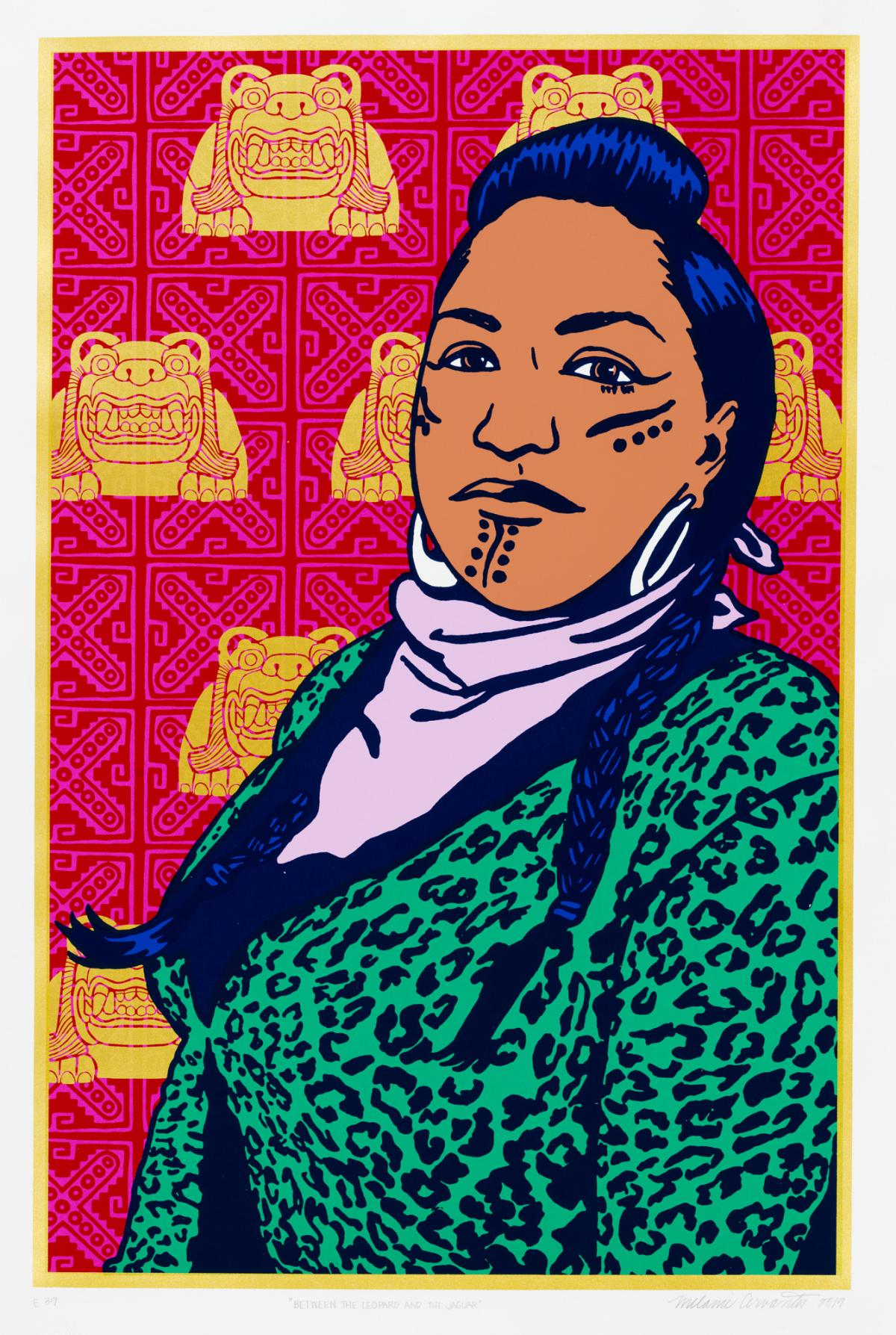
SAAM’s landmark exhibition, ¡Printing the Revolution! The Rise and Impact of Chicano Graphics, 1965 to Now, explores how Chicanx artists have linked innovative printmaking practices with social justice. This blog post is part of series that takes a closer look at selected artworks with material drawn from exhibition texts and the catalogue.
Between the Leopard and the Jaguar, by Melanie Cervantes, affirms the resilience of Indigenous communities since the conquest of the Americas. The print is part of the artist’s formidable body of work produced at the Oakland-based studio Dignidad Rebelde, a graphic arts collaboration between Cervantes and Jesus Barraza. This collective has built a practice of art activism grounded in Third World and Indigenous movements, with the aim to empower communities to transform the conditions of fragmentation, displacement, and loss of culture that result from histories of colonialism, genocide, and exploitation.
As a printmaker working today, Cervantes follows many traditions established by early Chicano graphic artists. In an ongoing effort to connect to Indigenous cultural heritage, Cervantes integrates ancient Mesoamerican symbolism and imagery with contemporary social movements. The result is a bold image that translates activist imagery into vivid poster design. The print depicts a contemporary danzante, a dancer associated with Indigenous ceremonies. The background patterns recall Aztec motifs from ancient to colonial eras. The repeating gold form represents an ocelotl cuauhxicalli, a sacred vessel in the shape of a jaguar used for sacrificial offerings, while the symmetrical grid pattern references patolli, an ancient Aztec game of chance outlawed by the Spanish.
Where the background references an ancient past in its symbolism, the figure brings the viewer into the present. She is based on a performer who appeared at an Occupy San Francisco event in 2011 to protest income inequality in the United States. The practice of facial tattooing—a tradition that once marked sacred rites of passage in many Indigenous cultures worldwide—was largely erased with colonialism but is now being revived in some communities. The figure wears a leopard print shirt or dress and a bandana around her neck, a common symbol of Zapatistas, a Mexican Indigenous revolutionary group based in the southern state of Chiapas. The artwork reflects Dignidad Rebelde’s adherence to the “principles of Xicanisma and Zapatismo,” philosophies that focus on indigeneity, feminism, and the power of the collective to fight exploitation.
As Cervantes describes in the ¡Printing the Revolution! Virtual Conversation Series, “We create art that amplifies people’s stories of struggle and resistance in order to return them to the hands of those same communities.”



















